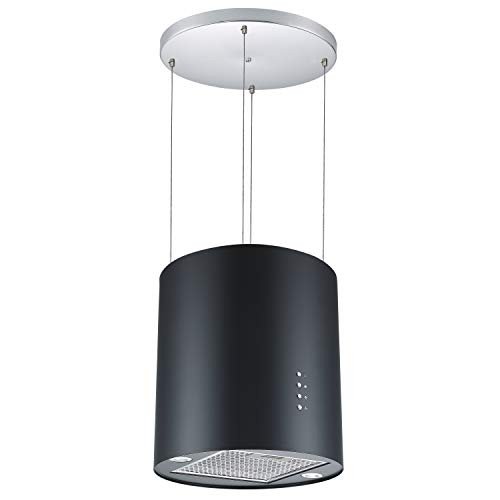
Modern Extractor Fan
Add a review FollowOverview
-
Founded Date September 29, 1984
-
Posted Jobs 0
-
Viewed 4
Company Description
Why You Should Focus On Improving Cooker Extractor Hood
Understanding Cooker Extractor Hoods: A Comprehensive Guide
In modern kitchens, the cooker extractor hood is more than just an accessory; it is a crucial component that makes sure a comfy and clean cooking environment. This post dives deep into what cooker extractor hoods are, their functions, numerous types, crucial factors to consider for selection, and frequently asked concerns. Whether property owners are refurbishing their kitchens or simply looking to upgrade their cooking devices, understanding the function of an extractor hood can help make notified choices.

What is a Cooker Extractor Hood?
A cooker extractor hood, also called a range hood or kitchen hood, is a gadget set up over the cooktop or stove. Its primary function is to ventilate the kitchen by removing airborne grease, smoke, steam, and odors produced throughout cooking. This not only enhances air quality but likewise assists in keeping the kitchen’s cleanliness.
Functions of Cooker Extractor Hoods
The main functions of an extractor hood include:
- Filtration: Removing air-borne particles and odors through filters.
- Ventilation: Providing fresh air by drawing in stagnant air, grease, and smoke.
- Lighting: Offering lighting over the cooking area for better presence.
- Heat Regulation: Preventing excess heat from building up in the kitchen.
Types of Extractor Hoods
Cooker extractor hoods can be found in various types, each matched for different kitchen styles and cooking styles. Below is a table summarizing the various types:
| Type | Description | Pros | Cons |
|---|---|---|---|
| Wall-Mounted | Connected to the wall above the stove. | Effective suction, space-saving | Needs wall area, installation can be complex |
| Under-Cabinet | Fits beneath cabinetry. | Discreet, convenient for small spaces | May have lower suction power |
| Island | Suspended from the ceiling, suitable for kitchen islands. | Visual appeal, effective ventilation | More pricey, might require professional installation |
| Downdraft | Developed into the cooktop, rises during usage and withdraws when not needed. | Smooth style, saves overhead space | Usually less reliable than traditional hoods |
| Filterless | Utilizes sophisticated purification technology, decreasing grease and odors without standard filters. | Less maintenance, longer life expectancy | Generally greater rate point, might not fit all kitchen styles |
Secret Considerations for Choosing a Cooker Extractor Hood
When selecting a cooker extractor hood, a number of aspects ought to be thought about to take full advantage of performance and guarantee viability for individual kitchen requirements:
1. Size
Guarantee the hood is at least as large as the cooktop. Optimum sizing is essential for efficient air capture. For a better fit, consider:
- Standard cooktops: 30 inches hoods
- Expert cooktops: 36 inches or bigger hoods
2. Suction Power (CFM)
The airflow of the hood is measured in Cubic Feet per Minute (CFM). A higher CFM shows much better ventilation, which is vital for heavy cooking.
Advised CFM:
- Light cooking (e.g., boiling, steaming): 200-300 CFM
- Moderate cooking (e.g., sautéing, frying): 300-600 CFM
- Heavy cooking (e.g., grilling, wok cooking): 600+ CFM
3. Ducted vs. Ductless
- Ducted: Ventilates outside, extremely reliable however needs setup of ductwork.
- Ductless: Filters air and recirculates it back into the kitchen; setup is easier but might not be as efficient.
4. Noise Level (Sonnes)
Pay attention to the noise level, specifically in open-concept homes. Try to find hoods that run quietly, ideally producing less than 60 decibels on high speed.
5. Style and Aesthetics
Pick a hood that complements the total kitchen decor. Options can range from modern stainless-steel to conventional styles that mix effortlessly.
6. Ease of Maintenance
Consider designs with detachable, dishwasher-safe filters to alleviate cleaning efforts. Some designs include filter suggestions or indicators to inform users when a change is required.
Advantages of Installing a Cooker Extractor Hood
Incorporating a cooker extractor hood into the kitchen offers numerous notable advantages:
- Improved Air Quality: Filters and circulates fresh air, lowering cooking smells.
- Enhanced Comfort: Minimizes heat and steam retention.
- Cleaner Kitchens: Reduces grease accumulation on cabinets and walls.
- Visual Appeal: Modern hoods work as ornamental elements.
Often Asked Questions (FAQ)
1. How frequently should I clean my cooker extractor hood?
It is suggested to clean up the filters every 1-3 months, depending upon use frequency. Regular cleaning avoids grease buildup, making sure optimal efficiency.
2. Can I set up a cooker extractor hood myself?
While some designs are developed for easy DIY installation, complex ductwork or heavy designs may require expert setup to ensure security and effectiveness.
3. How do I figure out the best CFM for my kitchen?
Procedure your cooktop dimensions and think about cooking designs. A general rule is 1 CFM for every single 100 BTUs of the stove’s maximum heat output.
4. What type of hood is best for a small kitchen?
Under-cabinet hoods or downdraft designs are perfect for small kitchens due to their compact design, saving valuable area without sacrificing function.
5. Are all extractor hoods loud?
No, sound levels vary significantly. Try to find hoods that provide a greater CFM at lower decibels for a quieter efficiency.
Purchasing an appropriate cooker extractor hood is essential for producing a cleaner and more comfy cooking environment. By comprehending the various types, functions, and crucial considerations in choosing a hood, homeowners can significantly enhance their kitchen experience. With the right extractor hood in place, you’ll take pleasure in fresher air, minimized odors, and a more inviting kitchen area that’s as practical as it is elegant.
